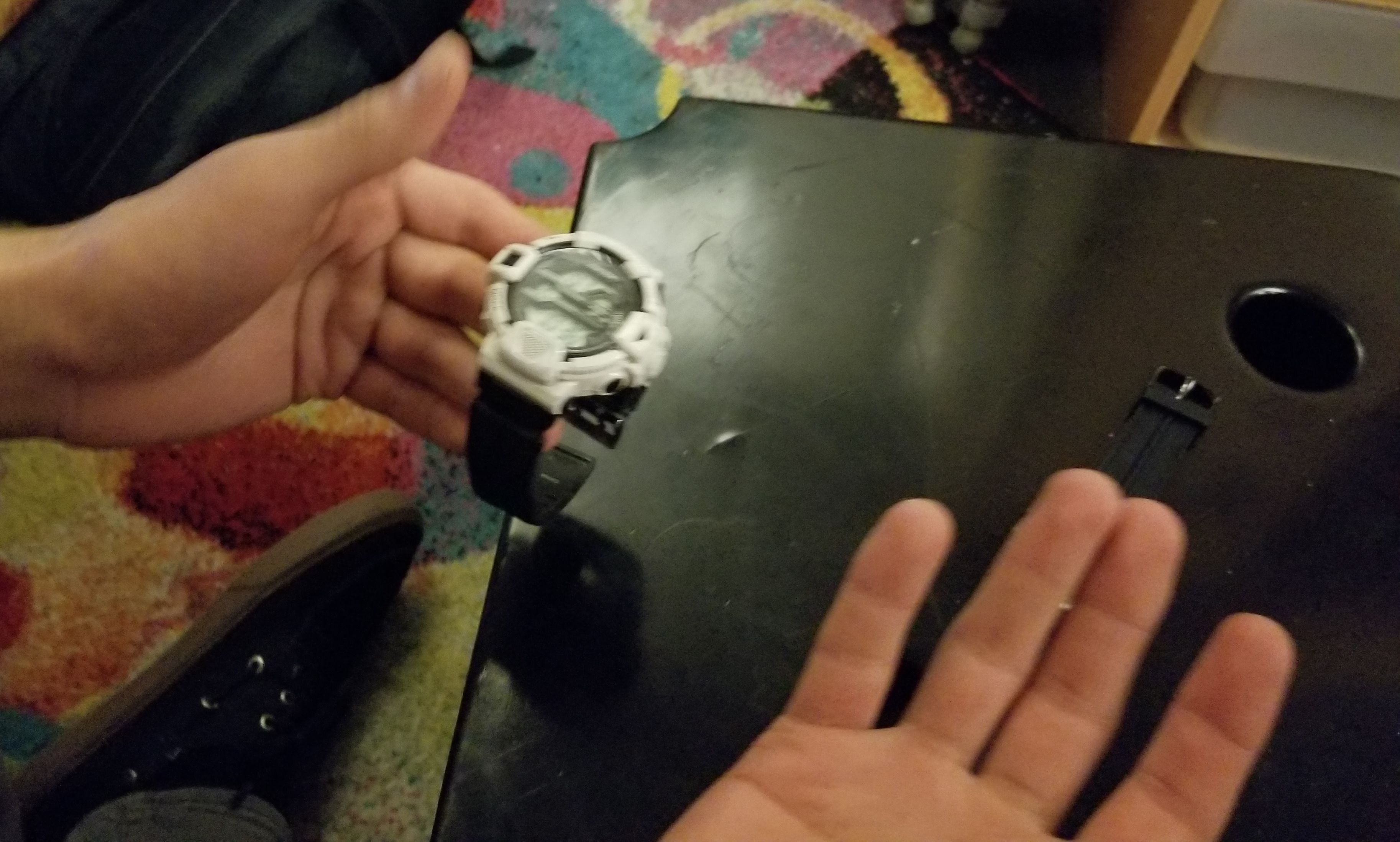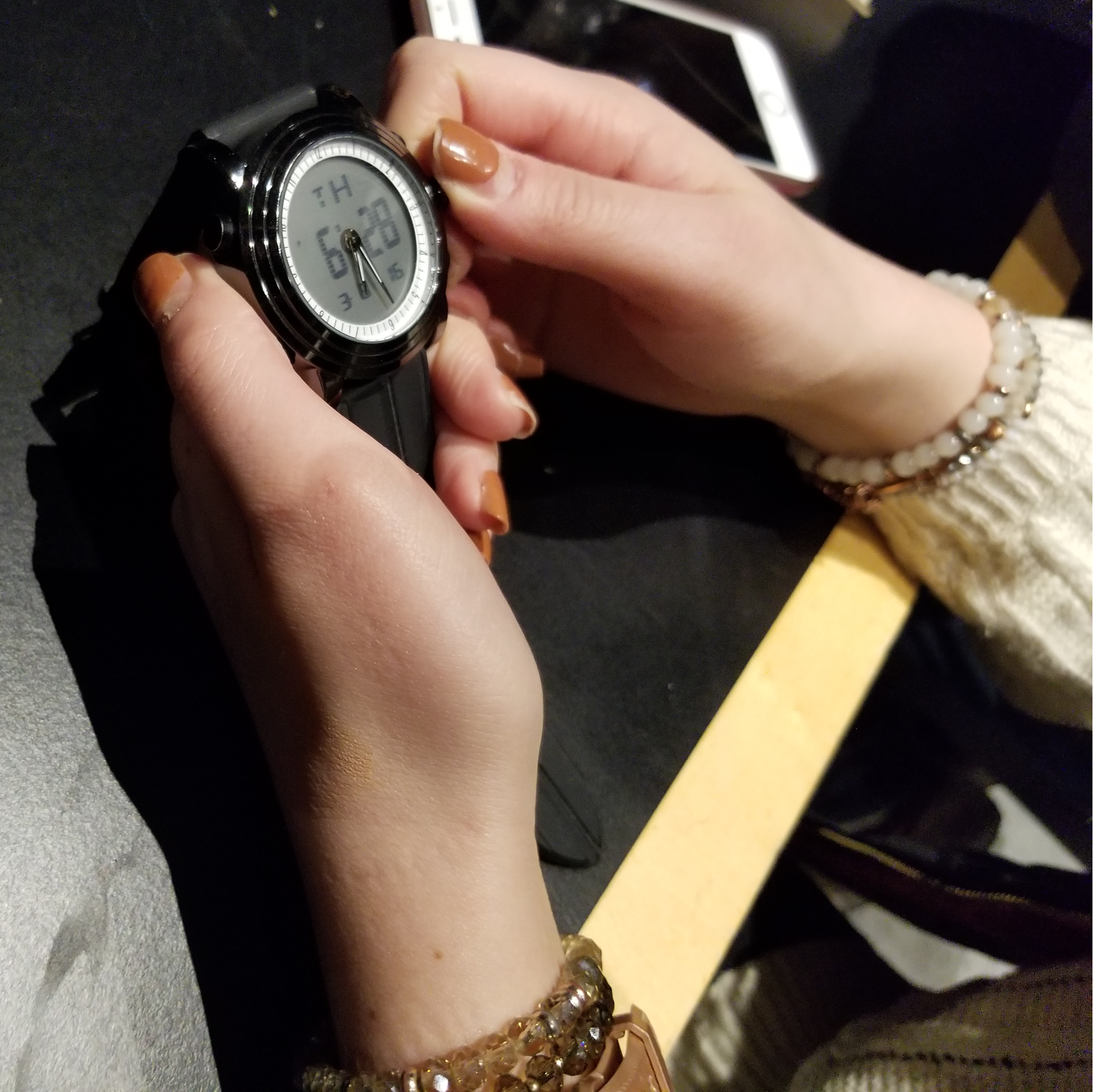| Overview |
| Interface |
| User Experience |
| Improvements |
To analyze the user experience of using a digital watch, I focused on the one process that is found in all watches: setting the time. To determine the intuitiveness of the watch interfaces, I instructed users to set the time of each of the three watches without explaining the function of the buttons or the process. I ran this experiment with a user who has never worn a digital watch, a user who has worn digital watches before, and an experienced, daily digital watch wearer. The table below shows the results in min:sec

The first and third watch have identical methods of setting the time, so users had learned while setting the third. The first two users performed faster setting the white watch, which involves holding the set button down for three seconds. This watch has labels, but they have been mostly worn off over the product's use cycle. Holding the set button for three seconds on the time face will enter the time setting mode as indicated by the seconds flashing. Like the first, the last watch has four, unlabeled buttons. Pressing the mode button until the user returns to the time face will enter the time setting mode as indicated by the seconds flashing. The experienced user had roughly the same times across the board, with differences due to cycling through the minutes to get to the desired value.

While the users performed the task, they made comments which illuminate some of the problems with the design. First, two of the watches do not have labels on any of the buttons, so the users had to employ simple trial and error to figure out each button's purpose. The light was the easiest button to learn, followed by the mode changer. However, as the function of the set and start buttons is not apparant on the time face when these buttons are pressed, users took longer to discover their purpose. Additionally, for the first and third watches, time setting required them to cycle through all modes back to the time face. When this happens, the seconds start flashing on and off. Still, both inexperienced users missed this flashing when first going through the modes, so it obviously wasn't clear.

In addition to setting the time, users were asked what features they thought were most useful on a watch. One respondant said she used her watch often for timing activities so needed a stopwatch face. She also said she often needed to use the watch at night, for which the backlight was very important. One watch wearer mentioned they liked the audial feedback of the beep when buttons were pressed, while one said they perferred it to stay silent. No one mentioned wanting additional features such as different time zones or a countdown timer, two functions that again can quickly be accessed on a phone if the occasion arises. However, users who wore watches said they did so as convenience to not have to check their phone so often.